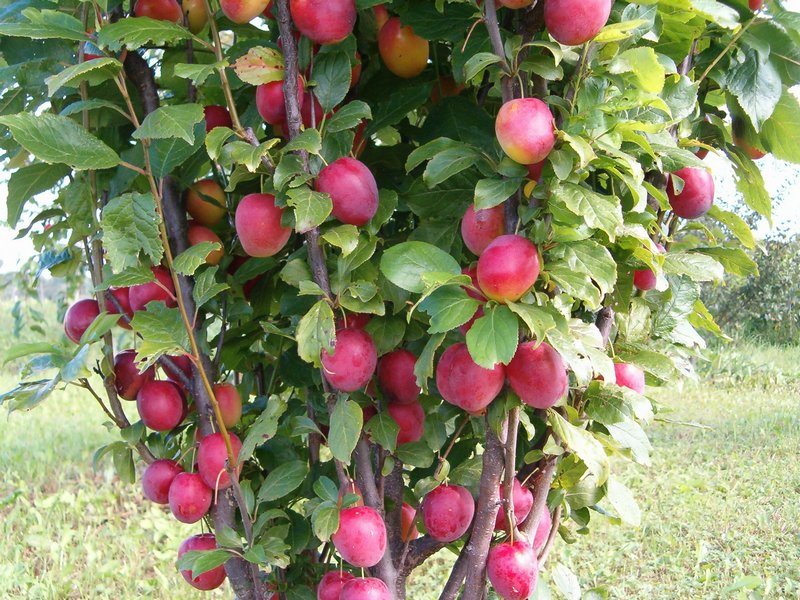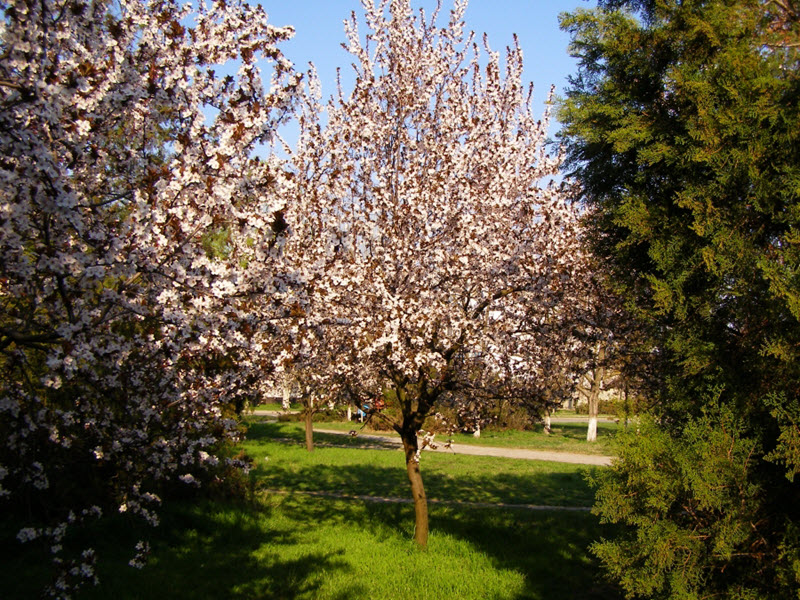How to plant a plum: tips and tricks
Content
When to plant
You can plant a seedling in the fall or spring. Disembarkation times vary by region. If the seedlings manage to root normally before the winter frosts come, then it will be much easier for them to grow and develop even in the cold season. If we talk about the middle zone of our country, then it is not recommended to plant plums in the fall.
That is why most often you can find recommendations for the spring planting of a fruit tree. But under the condition of a not particularly harsh climate, if everything is done correctly, then you can grow a plum tree in central Russia. In this case, you should not overuse dressings in order to prevent excessive overgrowth of branches, and also not to provoke a root burn. It is also not necessary to deepen the planting of a young tree, so that the bark does not overlap, which can adversely affect the growth and fruiting of the culture. Also, you can not tie the seedling with hard material to the support, so as not to damage the fragile bark. These are the recommendations for planting plums in the fall.
You can also transplant the tree into the ground in the spring. Since the first buds have not yet appeared at this time, it is best to plant a tree in your garden in the already somewhat warmed earth on the site. Do not forget to cut off the damaged part of the root system beforehand. Subject to strong soil moisture, it is recommended to plant a plum tree in an elevated place.
How to choose a seat
In order to grow a good viable tree, planted even in spring, even in autumn, it is necessary to choose the right site for planting. The plum variety is largely able to determine the composition that the soil should have for its normal growth and full development. If we talk about varieties that give oblong fruits that have an oval shape, then it is recommended for them to choose clay soil. And, for example, for such an excellent variety of plums, like Renclode, it will be correct to determine the place of planting loamy black soil. If you fertilize the soil well, you can transplant the purchased plum sapling even into dry sandy loam soil. Fat type soil is a good choice for growing plum trees.
In order to feed the future fruit tree, rotted manure introduced into the ground is well suited. For the correct planting of plums, the soil must be cultivated to a depth of about 40 cm. Plums are demanding on the level of soil acidity - ideally, it should be neutral. It is easy to control acidity by observing which weeds prefer to grow in the area in your garden. If sorrel, mint, plantain, heather grow there - you are dealing with an increased acidity of the soil, on which, in principle, it is also possible to plant plums if liming is done. To do this, sprinkle the land with lime or ash, then add manure and dig up. When preparing the planting pit, it is made up to 60 cm deep and wide. In addition to manure, compost, double superphosphate, potassium sulfate or ash are added there.
Video "How to plant trees in autumn"
Variety selection
Modern varieties of plums are quite diverse. The decision about which and how much to grow in your garden should be made by the gardener.
We will only tell you a little about the most popular types of plum trees. Belorusskaya is a plum variety, which is a small tree with a rounded crown. Large-sized fruits grow on it, which weigh up to 50 grams and have a sweet and sour taste. Such a crop begins to bear fruit in the fifth year from the moment of planting, and at the age of 10 years it is able to please its owner with a yield of about 30 kilograms from each tree.
Hungarian Plum is a variety of plum that has an average size of both the tree and the fruits themselves. The beginning of fruiting falls somewhere in the fifth year, you can get fruits weighing up to 30 grams. This variety has increased frost resistance, does not impose special requirements on agricultural technology. The maximum yield from this type of fruit tree, as practice shows, can be about 40 kg.
Hungarian Italian - is a medium-sized tree, the fruits of which can weigh from 30 to 40 grams. Under the condition of warm weather, the fruits perfectly retain their shape, but in cold weather, the possibility of cracking is not excluded. The harvest cannot be called regular, because at low air temperatures, the early flowering characteristic of this type of plum leads to poor fertilization. The fruiting period of such a tree begins in the fourth year after planting.
Large-fruited - is a tall tree with a beautiful pyramidal crown, with light yellow fruits that have a certain redness. Their dimensions are quite large, and the weight can be up to 65 grams. Begins to bear fruit in about 4 - 5 years. And closer to the 10th anniversary, you can collect about 25 kg of the harvest of delicious fruits from the tree.
Procedure
In the fall, you should purchase seedlings and dig them in on your site, making a special trench about 35 cm deep. Cover the roots and half of the stem, laying the seedlings obliquely, fill it with earth. The soil should be compacted and shed with water.
For transplanting seedlings, a smaller hole is required than for an apple tree. Its dimensions should be about 80 cm wide and 50 cm deep. When planting plums, a distance of about 3 meters should be left between the trees. Nearby, it is advised to plant plums of different varieties, since it will be better for them to be pollinated, and the yield will be higher.
After you decide on the variety and place of planting of the seedling, it is time to plant it in the soil. For this, as noted above, a planting pit of a certain size is prepared, where about 10 - 16 kg of compost or manure, 100 - 150 grams of double superphosphate, up to about 120 grams of potassium sulfate or up to 500 grams of ash are introduced. The root collar of the tree after planting should be on the surface of the soil. Since the soil will settle somewhat in the process, the landing site should be 5 cm above ground level. After filling up the roots, compact the soil and pour with two buckets of water. After that, you need to tie the fathoms to the hammered peg using a soft twine, and then mulch with humus, peat or rotted manure.
Video "How to grow a plum yourself"
The video contains detailed tips to help you grow a large and prolific tree.





